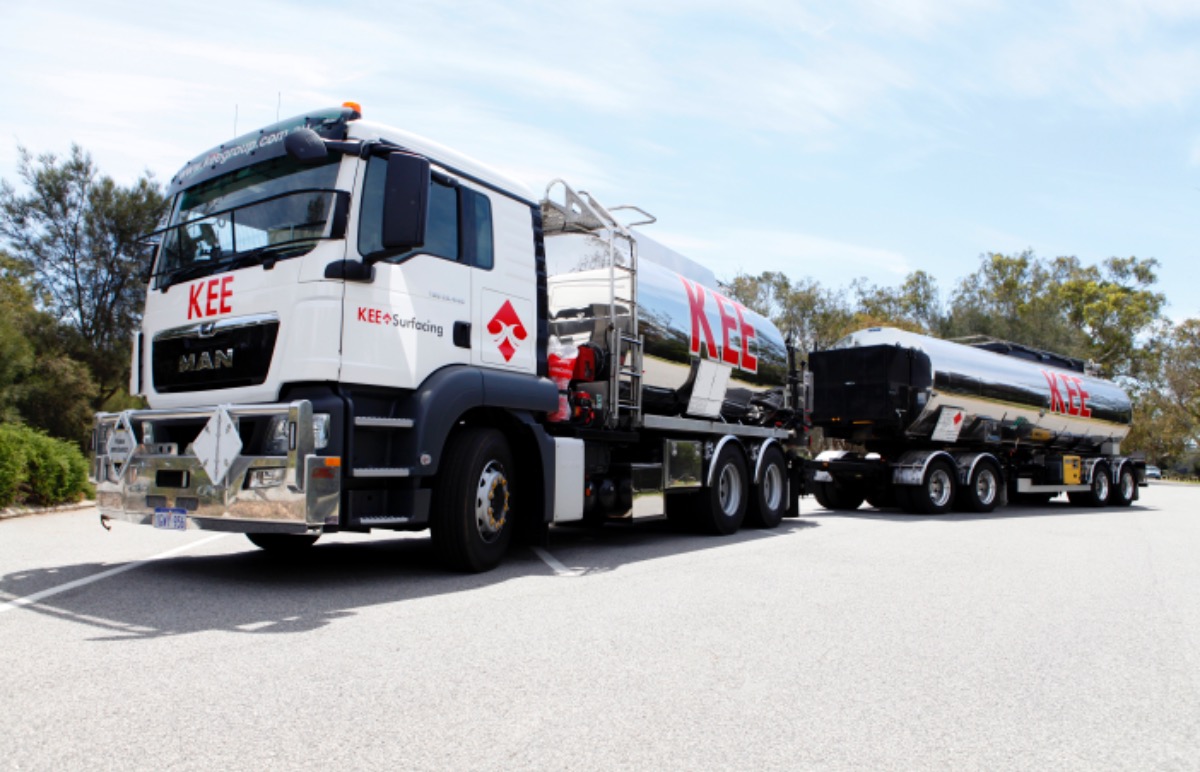
Bitumen and Sprayer: Construction and Maintenance of Asphalt Roads
Ever wondered what bitumen is or what a bitumen sprayer does? In this blog, we will look at its functionality in the surfacing world, and how it helps to pave the way for better, smoother roads throughout Australia.
Understanding Bitumen: Composition, Elements, and Functionality
Bitumen is a thick, sticky, black liquid made from a complex mixture of hydrocarbons, primarily consisting of high molecular weight compounds. The exact chemical composition of bitumen can vary depending on its source and the refining process it undergoes. However, bitumen is predominantly composed of the following elements: Carbon (C): Bitumen contains a high percentage of carbon, which is the primary element in hydrocarbons. Hydrogen (H): Hydrogen is another major component of bitumen, forming various hydrocarbon chains and providing energy during combustion. In addition to carbon and hydrogen, bitumen may also contain smaller amounts of the following elements: Nitrogen (N): Nitrogen can be present in bitumen as a minor component in the form of organic compounds. Oxygen (O): Oxygen is typically found in bitumen in trace amounts, often as a result of oxidation. Sulphur (S): Sulphur can be present in bitumen, usually in low concentrations. However, sulphur content can vary depending on the source and refining process. High sulphur content can lead to environmental and operational challenges, so sulphur is often reduced during refining. Trace Elements: Bitumen may contain trace amounts of other elements, such as metals (e.g., vanadium, nickel, and iron), as well as small quantities of aromatic compounds and resins.
The Role of Bitumen Sprayers in Road Construction and Maintenance
A bitumen sprayer is a piece of equipment used in the construction and maintenance of asphalt roads. Its main function is to spray a layer of hot bitumen onto the surface of the road before laying down the asphalt. The bitumen sprayer is designed to distribute the bitumen evenly over the surface, ensuring that the asphalt adheres properly and forms a strong, durable surface. Typically, bitumen is heated to temperatures between 150°C (302°F) and 190°C (374°F) before being sprayed onto the road surface. These high temperatures are necessary to liquefy the bitumen and make it easier to apply and spread evenly. The bitumen sprayer consists of a tank that holds the bitumen, a heating system to keep the bitumen at the right temperature, a pump to circulate the bitumen, a spray bar with nozzles to distribute the bitumen, and controls to regulate the flow and pressure of the bitumen.
The Key Components and Operation of a Bitumen Sprayer
The sprayer is typically mounted on a truck or trailer and operated by a trained operator. The operator drives the sprayer along the road while spraying the bitumen onto the surface. The speed at which a bitumen sprayer operates can vary depending on factors such as the type of equipment, road conditions, and project requirements. However, in general, bitumen sprayers typically operate at a speed range of 5 to 15 kilometers per hour (3 to 9 miles per hour). This range allows for effective and controlled application of bitumen (asphalt) on road surfaces, ensuring proper coverage and adherence to the roadbed The spray bar can be adjusted to vary the width and thickness of the layer of bitumen, depending on the specific requirements of the project.
Overall, the bitumen sprayer plays a crucial role in the construction and maintenance of asphalt roads, ensuring that they are built to the highest standards of quality and durability.
If you need surfacing for your next project, contact our dedicated KEE Spray team on (08) 6401 8500
We’re here to Keep Exceeding Expectations!


